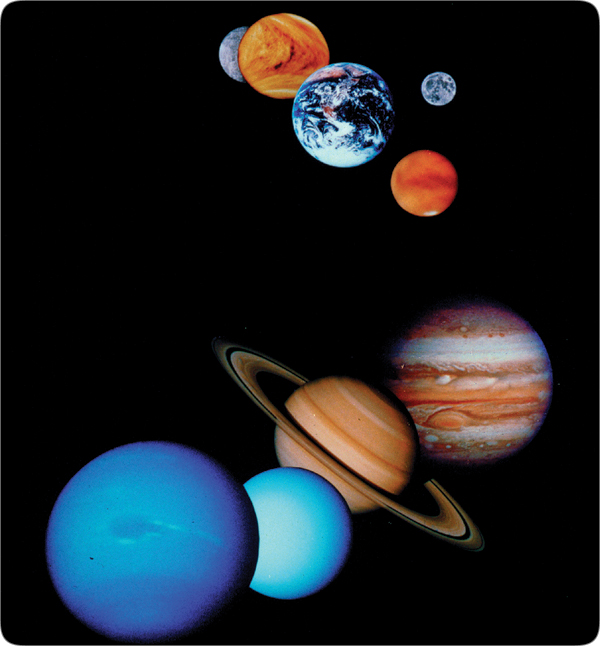Below is the online edition of In the Beginning: Compelling Evidence for Creation and the Flood,
by Dr. Walt Brown. Copyright © Center for Scientific Creation. All rights reserved.
Click here to order the hardbound 8th edition (2008) and other materials.

Figure 23: Unique Planets. This is a composite photograph (not to scale) of all planets in the solar system, except Pluto. They are, from top to bottom: Mercury, Venus, Earth (with the Moon to the right), Mars, Jupiter, Saturn, Uranus, and Neptune. The photos were taken by Mariner 10 (Mercury), Pioneer Venus Orbiter (Venus), Apollo 17 astronauts (Earth), Earth-based telescopes (Moon and Mars), and the two Voyager spacecraft (the four giant planets).
Each planet is unique. Similarities that would be expected if the planets had evolved from the same swirling dust cloud are seldom found. Yet, most planetary studies begin by assuming the planets evolved and are therefore similar. Typical arguments are as follows: “By studying the magnetic field (or any other feature) of Planet X, we will better understand how Earth’s magnetic field evolved.” Actually, each magnetic field is surprisingly different. “By studying Earth’s sister planet, Venus, we will see how plate tectonics shaped its surface and better understand how plate tectonics works on Earth.” It is now recognized that plate tectonics does not occur on Venus. (Part II of this book will show that the plate tectonic theory is incorrect.) [See also "Does Recently Declassified Data Falsify Plate Tectonic Theory?" on page 515.]